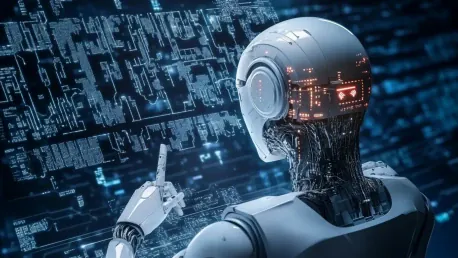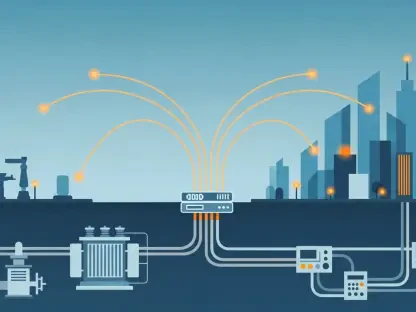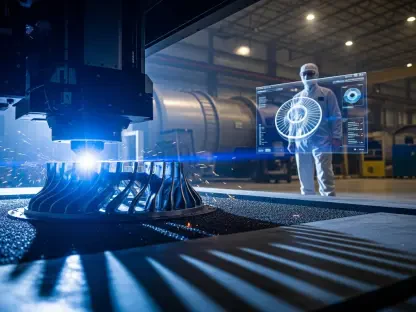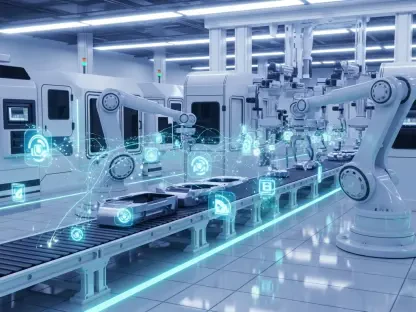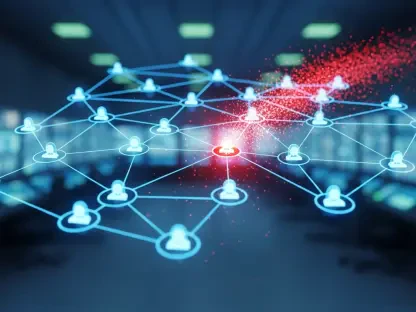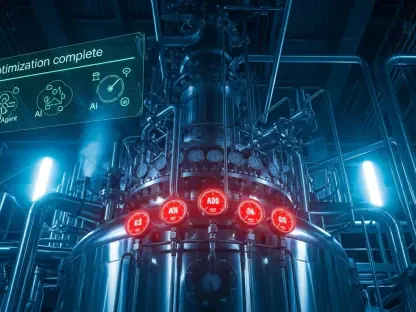The rapid advancement of artificial intelligence (AI) and automation technologies is fundamentally reshaping the job market, offering unprecedented opportunities for efficiency, accuracy, and new job creation. However, these technologies also pose significant challenges and risks, such as job displacement and heightened social inequality. This article explores the transformative changes in the job market induced by AI and automation, reflecting various perspectives and trends, and examining both the potential benefits and the challenges that come with these technological innovations.
The Shift to Remote and Hybrid Work Models
The COVID-19 pandemic has accelerated the adoption of remote and hybrid work models, fundamentally altering traditional on-site job dynamics in the United States. As a result, the percentage of remote jobs has surged to 26%, with over 50% of the market now comprised of hybrid models. This shift represents a monumental change away from traditional on-site work, which now accounts for only 19% of available job offers. The widespread acceptance of remote work has not only reshaped the workplace environment but also redefined how companies and employees view productivity and work-life balance.
Artificial intelligence has played a crucial role in enabling remote and hybrid work by automating various tasks, from project management to cybersecurity. This technological support allows companies to operate efficiently in a distributed manner, minimizing the need for physical presence while maintaining high productivity levels. AI’s influence extends across numerous industries, improving accuracy, cost-effectiveness, and operational workflows. By streamlining administrative and repetitive tasks, AI has made remote work more viable and attractive, ensuring that businesses can continue functioning smoothly despite physical separation. These developments underscore AI’s critical role in the modern workplace, transforming how businesses operate and employees engage with their work.
AI’s Impact on Healthcare
AI is revolutionizing the healthcare industry by enhancing diagnostics and overall efficiency. AI-powered software manages patient data, tracks lab results, and scans medical images with incredible precision, often identifying patterns imperceptible to the human eye. This level of accuracy contributes to better treatment decisions and timely interventions, which can be critical for patient outcomes. Furthermore, AI-driven tools are assisting in the early detection of diseases, allowing healthcare providers to implement preventive measures and improve patient prognosis.
The integration of AI in healthcare not only improves patient care but also reduces the workload on healthcare professionals. By automating routine tasks, AI allows doctors and nurses to focus on more complex and critical aspects of patient care, ultimately leading to enhanced healthcare services. For example, AI can handle scheduling, administrative paperwork, and follow-up reminders, which frees up time for healthcare providers to engage in direct patient care. Additionally, AI-driven systems can facilitate real-time monitoring of patient vitals and predict potential health issues before they escalate. This proactive approach enhances patient safety and ensures that medical resources are utilized efficiently.
Smart Manufacturing and Cybersecurity Concerns
The manufacturing industry is moving towards ‘smart factories,’ integrating AI and IoT to create more dynamic, precise, and cost-effective workflows. The smart manufacturing market reached USD 223.6 billion last year and is projected to grow near USD 1 trillion by 2032. This transformation enables manufacturers to optimize production processes, reduce waste, and improve product quality. AI-driven automation in manufacturing enhances productivity and reduces errors by automating repetitive tasks and providing real-time data analysis for better decision-making. However, this shift also raises significant cybersecurity concerns, as nearly 25% of cyberattacks on industrial targets in 2022 were directed at smart factories.
The increasing reliance on connected devices and AI systems in manufacturing necessitates robust cybersecurity measures to protect against potential threats. Companies must invest in advanced security protocols to safeguard their smart factories from cyberattacks, ensuring the safety and integrity of their operations. This includes implementing multi-layered security frameworks, regular system updates, and employee training on cybersecurity best practices. By proactively addressing cybersecurity risks, manufacturers can protect their assets and maintain the trust of their clients and stakeholders.
Automation in the Financial Sector
In the financial sector, AI has become indispensable for automating complex and time-consuming tasks such as predictive analysis, account reconciliation, and financial planning. The financial sector’s reliance on AI for streamlined operations is underscored by the revenue it generated—USD 38.8 billion last year, with market expectations to surpass USD 190 billion by 2030. AI’s ability to analyze vast amounts of data quickly and accurately makes it a valuable tool for financial institutions, enabling them to identify trends, manage risks, and make informed decisions.
By automating routine tasks, AI allows financial professionals to focus on strategic decision-making and client interactions, ultimately enhancing the overall efficiency and effectiveness of financial services. For instance, AI-driven algorithms can detect fraudulent activities in real time, providing an added layer of security for financial transactions. Moreover, AI can assist in personalizing financial advice for clients, tailoring investment strategies based on individual preferences and risk profiles. As a result, financial institutions can offer more competitive and customer-centric services, driving growth and innovation in the sector.
AI in the Gambling and Entertainment Industry
AI is a game-changer in the gambling and entertainment industry, particularly in the rise of crypto casinos and platforms like Bety. AI enhances user experiences by improving game development and providing 24/7 customer support through the use of chatbots. These AI-driven solutions ensure seamless and engaging experiences for users, leading to increased customer satisfaction and loyalty. Additionally, AI algorithms can analyze user behavior to offer personalized recommendations, further enhancing the overall gaming experience.
The integration of AI in entertainment not only improves the quality of services but also creates new job opportunities. The sector sees significant demand for IT professionals, such as project managers, system administrators, and help desk specialists, to support the growing use of AI technologies. As the industry continues to evolve, the demand for skilled IT professionals will grow, driving innovation and enhancing user experiences. This dynamic environment presents exciting career prospects for individuals with expertise in AI and digital technologies, fostering a vibrant job market in the entertainment industry.
Emergence of New Job Categories
The increasing prevalence of AI has created a high demand for AI and IT specialists. According to the US Bureau of Labor Statistics, there are over 375,000 AI-related job openings annually, highlighting the growing need for skilled professionals in this field. Distinguished professionals in AI engineering, natural language processing, data analysis, and AI business strategy are highly sought after, often commanding salaries exceeding USD 100,000. As AI technologies continue to evolve, new job categories will emerge, requiring specialized skills and expertise.
Workers must adapt to these changes by acquiring new skills or enhancing existing ones to remain competitive in the job market. This involves continuous learning and staying updated with the latest advancements in AI and related fields. Educational institutions and training programs play a crucial role in equipping individuals with the necessary knowledge and skills to thrive in an AI-driven job market. By fostering a culture of lifelong learning, workers can secure their positions and contribute to the growth and innovation of their respective industries.
Skill Demands and Workforce Adaptation
To thrive in an AI-driven job market, workers must acquire new skills or enhance existing ones—a concept known as upskilling (improving the abilities of those already trained) versus reskilling (teaching new technologies from scratch). This is becoming critical across sectors like finance, manufacturing, and healthcare, where AI tools and technologies play pivotal roles. Companies must invest in training programs to help their employees adapt to new technologies. Providing opportunities for upskilling and reskilling ensures that the workforce remains capable and competitive in an increasingly automated world.
Organizations must recognize the importance of workforce adaptation and create environments that encourage continuous learning and development. This includes developing comprehensive training programs, offering mentorship opportunities, and providing access to online courses and resources. By prioritizing the growth and development of their employees, companies can build a resilient and adaptable workforce ready to tackle future challenges. Moreover, fostering a culture of learning and innovation can enhance employee satisfaction and retention, contributing to the overall success and sustainability of the organization.
Societal Impact: Job Displacement and Inequality
AI’s potential for job displacement constitutes a significant concern, as unplanned automation could result in widespread unemployment and exacerbate social inequality. Projections indicate that up to 800 million workers could lose their jobs by 2030 due to automation, highlighting the need for proactive measures to address this issue. Ethical considerations are paramount, necessitating the development of inclusive policies, retraining programs, and continuous oversight to mitigate adverse impacts on the workforce.
Governments, educational institutions, and private sectors must collaborate to create a supportive ecosystem that addresses the challenges posed by AI-driven job displacement. This includes implementing social safety nets, promoting access to education and training, and encouraging the development of new job opportunities in emerging industries. By taking a holistic approach, society can navigate the complexities of AI and automation, ensuring that technological advancements benefit all members of the workforce and do not disproportionately impact vulnerable populations.
Future Outlook: AI Integration and Advancements in 2025
Looking ahead, the article forecasts even more widespread and accelerated AI adoption with emerging functionalities such as agentic AI, which can engage with clients and make autonomous decisions. Improved integration between AI and cloud computing is expected to facilitate real-time data management on a vast scale. Consequently, companies across industries are likely to increase investments in upskilling and reskilling programs, ensuring that their workforce can utilize AI tools effectively and ethically.
The future of work will profoundly depend on how well these technologies are integrated and regulated to foster a fair and progressive job market. Continued advancements in AI will bring about new opportunities for innovation and growth, but they also require a commitment to ethical principles and responsible practices. By balancing technological progress with social responsibility, companies and policymakers can create an inclusive and equitable job market, where the benefits of AI are shared by all. The ongoing development of AI technologies and their integration into various industries promise to reshape the future of work, offering exciting possibilities for both employers and employees.
Conclusion: Balanced and Ethical AI Utilization
The rapid progression of artificial intelligence (AI) and automation technologies is fundamentally transforming the job market, offering unparalleled opportunities for increased efficiency, precision, and the creation of new job roles. However, these advancements also present significant challenges and risks, such as the displacement of workers and the potential for exacerbated social inequality.
This article delves into the sweeping changes in the job market brought about by AI and automation. It takes a look at various perspectives and trends, assessing both the promising benefits and the inherent difficulties associated with these technological innovations. For instance, while AI can streamline operations and reduce expenses for businesses, it may also render certain jobs obsolete, pushing workers to adapt and acquire new skills.
Moreover, there is a concern about the widening gap between those who can keep up with technological advancements and those who cannot, potentially leading to increased social and economic disparity. On the flip side, automation opens avenues for job creation in areas like AI maintenance, cybersecurity, and data analysis, where human expertise is still irreplaceable.
In summary, the integration of AI and automation into the workforce is a double-edged sword. It holds the promise of profound benefits but also harbors challenges that require careful consideration and proactive measures to ensure that the evolution of the job market benefits society as a whole.
